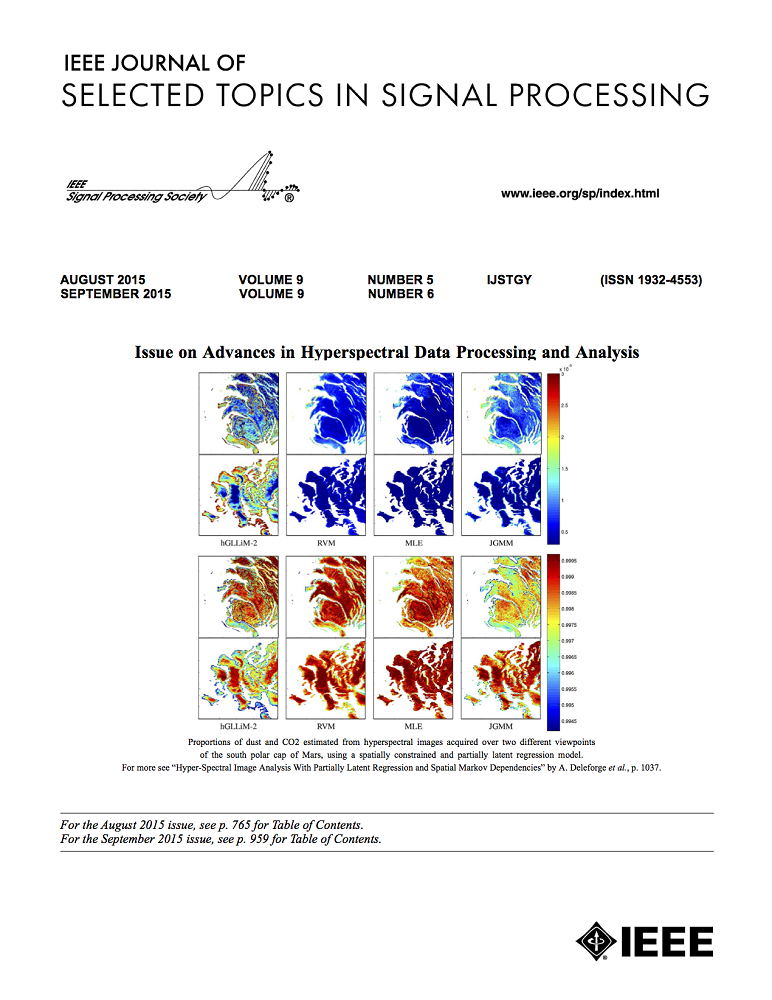基于混合dac的毫米波XR通信安全混合模拟和数字波束形成
IF 13.7
1区 工程技术
Q1 ENGINEERING, ELECTRICAL & ELECTRONIC
IEEE Journal of Selected Topics in Signal Processing
Pub Date : 2023-07-24
DOI:10.1109/JSTSP.2023.3298474
引用次数: 0
摘要
为了在扩展现实(XR)辅助毫米波(mmWave)通信中实现性能和实现复杂性之间的平衡,使用混合数模转换器(dac)建立了安全的混合数模(HDA)波束形成,方法是用一些廉价的低分辨率dac部分取代昂贵的全分辨率dac。我们专注于这种系统的安全HDA波束形成。此外,XR技术有助于提高这种复杂情况下的操作效率。首先,推导了平均保密率(ASR)的近似近似。为了在获得部分窃听信道知识的情况下最大化ASR,我们提出了一种巧妙地利用交替迭代来设计模拟、机密信息(CM)和人工噪声(an)波束形成器的算法。在模拟波束形成器和CM/AN波束形成器的基础上,采用梯度下降算法对改进后的AN/CM波束形成器进行求解。然后,针对CM波束形成器和AN波束形成器,结合Dinkelbach和最大化最小化方法对模拟波束形成器进行优化。仿真结果表明,该算法在中、高信噪比区域的ASR性能明显优于现有算法。本文章由计算机程序翻译,如有差异,请以英文原文为准。
Secure Hybrid Analog and Digital Beamforming for mmWave XR Communications With Mixed-DAC
To achieve a balance between performance and implementation complexity in extended reality (XR)-aided millimeter wave (mmWave) communication, secure hybrid digital and analog (HDA) beamforming with mixed digital-to-analog converters (DACs) is established by partially replacing costly full-resolution DACs with some cheap low-resolution DACs. We focus on secure HDA beamforming for such a system. Furthermore, XR technology is aided to improve the operating efficiency in this complex scenario. First, a closed-form approximation of the average secrecy rate (ASR) is derived. To maximize ASR with partial eavesdropping channel knowledge available, we propose an algorithm of skillfully utilizing the alternating iteration to design beamformers of analog, confidential message (CM) and artificial noise (AN). Given the analog and CM/AN beamformers, the updated AN/CM beamformer is addressed by a gradient descent algorithm. Then, given the beamformers of CM and AN, Dinkelbach and Majorization-Minimization are combined to optimize analog beamformer. Simulation results show that the proposed algorithm achieves much better ASR performance than existing methods in the medium and high signal-to-noise ratio regions.
求助全文
通过发布文献求助,成功后即可免费获取论文全文。
去求助
来源期刊

IEEE Journal of Selected Topics in Signal Processing
工程技术-工程:电子与电气
CiteScore
19.00
自引率
1.30%
发文量
135
审稿时长
3 months
期刊介绍:
The IEEE Journal of Selected Topics in Signal Processing (JSTSP) focuses on the Field of Interest of the IEEE Signal Processing Society, which encompasses the theory and application of various signal processing techniques. These techniques include filtering, coding, transmitting, estimating, detecting, analyzing, recognizing, synthesizing, recording, and reproducing signals using digital or analog devices. The term "signal" covers a wide range of data types, including audio, video, speech, image, communication, geophysical, sonar, radar, medical, musical, and others.
The journal format allows for in-depth exploration of signal processing topics, enabling the Society to cover both established and emerging areas. This includes interdisciplinary fields such as biomedical engineering and language processing, as well as areas not traditionally associated with engineering.
 求助内容:
求助内容: 应助结果提醒方式:
应助结果提醒方式:


